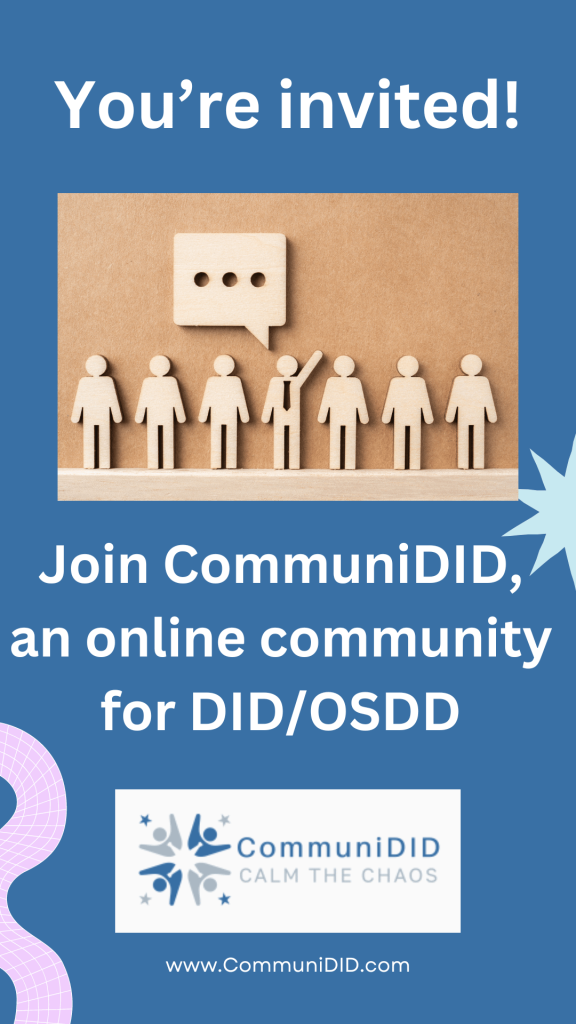My Approach to Treating DID
I’ve been working with clients who have DID for four years now. The people I work with are very courageous (even though they don’t always see it) and I am honored to work with them. I encourage you to schedule a free 15-minute consultation where you can ask me questions and assess for yourself if I seem to understand DID and how to work with it.
Aside from that, perhaps I can provide some information that will help you decide if I might be someone who can help you:
- I understand that with DID trust must be earned. I don’t expect you (collectively) to trust me, and in fact I appreciate that you don’t. Not trusting probably kept you safe in the past. I invite all the members of your system to take their time observing me. Do my actions and my words seem to match over time? That can tell you a lot.
- I understand that each system has their own end-goal in mind. There is no “one-size fits all” goal, and recovery looks different in each case. For some systems, the end goal is to have effective communication, collaboration, and cooperation throughout the system. Others might have a goal of fusion, where all members fuse into a single unified part. It’s not my place to tell you what works best for you. My place is to listen to you and help you work toward your desired goal.
- From what I’ve observed, some therapists feel very strongly about only talking to the host part. I leave it up to you. Some systems prefer to have me “talk through” to system members as needed, where I talk to them and they reply to me through the fronting alter. In other cases, different alters will present to the session and of course sometimes in session switches occur, some intentionally and some unexpectedly. I talk with and work with whoever is fronting although when I believe that something calls for a particular part, I will ask to work with them, either directly or by talking through. For example, if a very young child part shows up, I will welcome them and listen to them for a short while, making sure they feel seen and heard, before asking to have an adult part front. It will help the child part more in the long run if I can help the adult part or parts to address the child part’s needs. This is because I won’t be with you in your day-to-day life to offer that assistance, so it’s more beneficial for you if I help you learn how to help each other.
- I understand that a system typically includes parts whose genders match the physical body and those who are dealing with the dysphoria of inhabiting a body which doesn’t match their perceptions. I understand that not everyone is a “he” or a “she” and I do my very best to honor each part’s pronouns. On the occasions when I mess up and I catch myself, I apologize. I ask my people to point out to me when it happens (if I miss it) so that I have increased awareness of the issue and am less likely to make that mistake with them again. I have a transgender daughter whom I’m very proud of, and I fully support trans rights and honoring a person’s pronouns. (Incidentally, mine are she/hers). I just don’t always get it right every time and appreciate the correction when it’s needed.
- My particular specialty and focus is working with phase 1 of the trauma treatment model. This is the phase involving stabilization of the system and symptoms. A lot happens in this phase and this is the work that makes it safe to do the trauma processing work of phase 2.
- My approach to working with DID is heavily influenced by Janina Fisher’s Trauma-Informed Stabilization Treatment (TIST). My approach includes giving you, over time, a lot of information so you understand trauma. This is information that helps explain what is going on and why and also what you can do to work with the situation. Benefits of this approach include you feeling less overwhelmed and confused about what you are experiencing and it diminishes the power inequality in the therapy relationship. I will provide the you with a lot of tools and skills so they can see which tools are most effective for them. When I suggest something that I believe will be helpful to you, I explain why. You and I are partners in our work and you get to decide if something I suggest makes sense for you or not.
Experience and Training
What to Expect in Sessions
My Opinion on Final Fusion
CommuniDID
I’m sure there are topics I haven’t thought to address here that you might have questions about. If so, I invite you to schedule the free 15-minute consultation with me.


